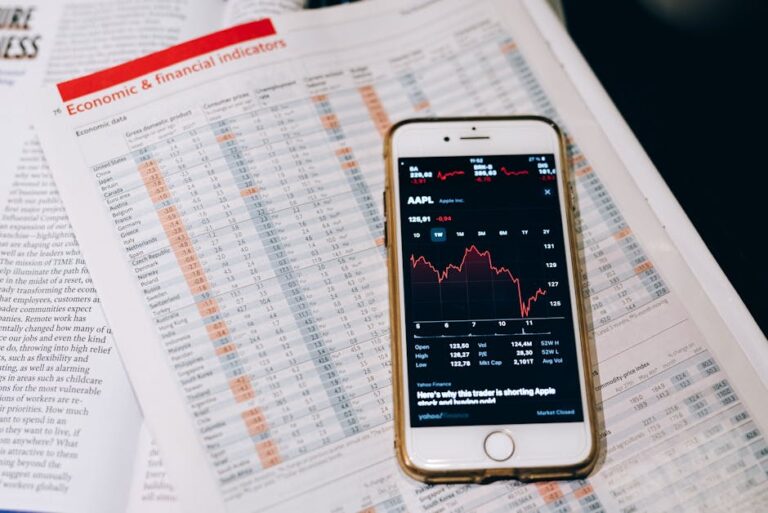So you want to know how do I create a Google Ad. Good. It’s about time.
You’ve probably heard it a million times. “You gotta be on Google.” “All my customers come from Google.” It’s this big, confusing thing that everyone says you need to be doing.
But when you actually log in, it’s just a wall of menus and numbers. It feels like you need a special degree just to figure out where to click. It’s a lot, honestly.
This guide is different. We’re not going for a super polished, corporate feel. This is a down-to-earth, step-by-step thing for 2025.
We’ll walk through how to set up an ad campaign without all the confusing jargon. Let’s just get it done.
First, Let’s Get The Basics Sorted
Before you even think about clicking “Create Campaign,” you need a plan. A bad plan is better than no plan at all. Seriously.
So many people just throw money at Google and hope for the best. That’s a good way to lose money fast.
You need to answer a few questions for yourself. It’s the boring part but it’s the part that actually makes this work.
What are you trying to do here? Do you want people to buy a thing from your website? Or maybe you want them to fill out a contact form.
That’s your goal. It has to be something clear. Not just “get my name out there.” That’s too vague.
Who are you trying to talk to? Are they young? Old? Do they live in a specific city? The more you know about your customer the better.
And the big one, how much money can you spend? You need a daily budget in mind. It doesn’t have to be huge. Just be realistic.
The Actual Process: How to Build Your Campaign
Okay, you’ve done your homework. You know your goal, your audience, and your budget. Now it’s time to actually build the thing.
Go to the Google Ads website and log in. You’ll see a big blue button somewhere that says “+ New Campaign.” Click it.
This is where the journey begins. Don’t get scared by all the options. We’ll take them one by one.
Choosing Your Main Goal
Google will ask you what you want to achieve. It shows options like “Sales,” “Leads,” or “Website traffic.”
This connects back to the homework you just did. If you sell stuff online, pick “Sales.” If you want people to call you, pick “Leads.”
It is typically considered to be a good idea to just pick the most obvious one. This choice helps Google’s computer brain aim your ads better.
Picking a Campaign Type
Next up is the campaign type. This is basically where your ads will show up. There are a few kinds.
Search: These are the text ads you see on the Google search results page. This is normally the best place for beginners to start.
Performance Max: This is the new-ish, all-in-one campaign. It runs ads everywhere. It can work well but is sometimes a black box.
Display: These are picture ads that show up on other websites. Think of them like digital billboards.
For now, just stick with “Search.” It’s the most straightforward and you have more control. We’re trying to walk before we run.
After that you’ll set your bidding. Google will ask how you want to focus. Generally, you can pick “Clicks” or “Conversions.”
If you’re just starting, focusing on “Clicks” is fine. It’s simple. You pay when someone clicks your ad. Easy.
Then you’ll set your location and language settings. This is important. Don’t show ads in Japan if you only ship to Ohio.
Writing Ads That People Actually Click On
This is the fun part for some and the scary part for others. You have to write the actual words for your ad.
Your ad is made up of a few parts, mainly headlines and descriptions. These little bits of text are your sales pitch.
The reason why is because a good ad gets clicks, and a bad ad just gets ignored, and you still pay for the bad ad if no one clicks sometimes depending on how you set it up.
Headlines are the blue, clickable text. You get a few of them, and Google will mix and match them to see what works best.
Make them punchy. Put your most important keywords in there. Ask a question or state a clear benefit.
Descriptions are the smaller text underneath. Here you have a bit more room to explain what you’re offering.
Don’t just list features. Talk about how your product or service helps the person. What problem does it solve for them?
And you absolutely must have a call to action. Tell people what to do. “Buy Now.” “Get a Free Quote.” “Shop Our Sale.” Be direct.
Keywords: The Engine of Your Google Ad
Keywords are the words and phrases people type into Google that will make your ad appear. They are the entire foundation of a Search campaign.
Picking the right keywords is probably the most important single thing you will do. This is what connects you to your customer.
Think like your customer. What would you type into Google if you were looking for what you sell? Write all those ideas down.
Match Types Explained Simply
Google gives you a few ways to control how closely a search has to match your keyword. These are called match types.
Broad Match: This is the default. It gives Google a lot of freedom to show your ad for related searches. It can also waste a lot of money. Be careful with this one.
Phrase Match: This is a good middle ground. Your ad shows for searches that include the meaning of your keyword. It’s much more controlled.
Exact Match: This is the most specific. Your ad will only show for searches that have the same meaning or intent as your keyword. It gives you the most control but the fewest impressions.
A lot of people find success starting with Phrase and Exact match keywords. It stops Google from going too wild with your budget.
Also, you have to use negative keywords. These are words you don’t want your ads to show up for.
If you sell expensive men’s shoes you might add “cheap” and “free” as negative keywords. This is a very direct way to save money.
—
Key Takeaways
Plan First: Before you do anything in Google Ads, know your goal, your audience, and how much you can spend. Don’t skip this.
Start with Search: For your first campaign, a “Search” campaign is usually the best and most controllable option.
Write for a Human: Your ad copy should speak to a person’s needs and tell them clearly what to do next.
Control Your Keywords: Use Phrase and Exact match types to start. And don’t forget to use negative keywords to stop wasting money on bad clicks.
Don’t Set and Forget: You have to check in on your campaigns. See what’s working and what isn’t, and make changes. It’s an ongoing process.
—
Frequently Asked Questions about “how do i create a google ad”
1. How do I create a Google Ad for free?
You can’t really run ads for free. The setup of the account is free, and creating the campaign doesn’t cost anything. But for your ads to actually show up and get clicks, you have to set a budget and pay for that traffic. There’s no way around spending money to advertise.
2. As a beginner, how do I create a Google Ad step-by-step?
The simplest way is to follow the guide above. First, define your goal and budget. Then, inside your Google Ads account, click “New Campaign,” choose “Search,” set your location, write your headlines and descriptions, and finally, add your keywords using Phrase or Exact match. Launch it and check it regularly.
3. How do I create a Google Ad that actually works and gets customers?
The key is relevance. Your keyword, your ad, and your landing page all need to match. If someone searches for “red running shoes,” your ad should mention red running shoes, and the page they land on should show them red running shoes. This connection is what turns clicks into customers.
4. What’s the hardest part of how do I create a Google Ad?
Honestly, the hardest parts are keyword selection and patience. It’s easy to pick keywords that are too broad and waste money. It’s also hard to wait for enough data to come in before making changes. People often panic too early and change everything before they know what’s really happening.














